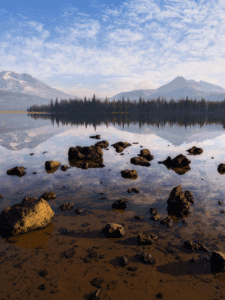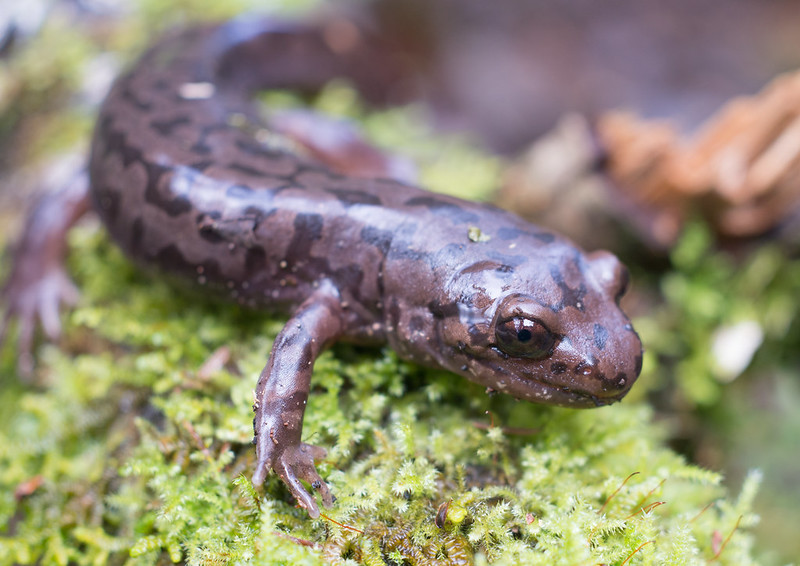| Scientific Name Coastal giant salamander (Dicamptodon tenebrosus), Cope’s giant salamander (Dicamptodon copei) Size Coastal giant salamander: Up to 13” total length, Cope’s giant salamander: Up to 8” total length Habitat Clear mountain streams and surrounding forests Status Coastal giant salamander: Not listed, Cope’s giant salamander: Listed as “sensitive” on Oregon’s sensitive species list |
About
Of Oregon’s native amphibians, the largest, and perhaps one of the most bizarre, are the pacific giant salamanders. There are four species of pacific giant salamander, two of which exist in Oregon: The Coastal Giant Salamander and Cope’s Giant Salamander.
The Coastal Giant Salamander has the broadest range of the genus and can be found in the cool mountain streams of the Washington and Oregon Cascades, the coastal ranges of Oregon and California, as well as in British Columbia. Reaching thirteen inches in length, these semi-aquatic creatures are brown and have external gills as juveniles, and are mottled brown and black as adults. Salamanders start their life entirely aquatic, with gills that allow them to breathe underwater. At the end of their larval period they either transform into terrestrial salamanders or remain in their fully aquatic natal form and keep their gills. Most of the adult terrestrial salamander’s life is spent undercover beneath logs, bark or stones, either in the streambed or on land, though they will roam about freely after heavy rains. Pacific giant salamanders feed mostly on small aquatic invertebrates and small vertebrates such as smaller salamanders or fish hatchlings.
The Cope’s Giant Salamander’s range extends from the Olympic Peninsula down into northwestern Oregon. It is similar in appearance to the coastal giant salamander, but is the smallest of the four giant salamanders, reaching almost 8 inches in total length. Unlike the coastal giant salamander, it rarely transforms into a terrestrial adult and spends the majority of its life in an aquatic environment.
Why does it need our help?
Being amphibians, giant salamanders are highly susceptible to poor water quality and environmental toxins. Logging and other human activities can lead to siltation and higher temperatures of stream waters, making important salamander habitat much less desirable. Amphibians like the pacific giant salamanders are considered indicators for the declining health of waterways. They are particularly sensitive to changes in water quality and are often the first to be affected by them. Healthy waterways and roadless areas free of logging are important for supporting the secure populations of pacific giant salamanders that currently exist in Oregon.
Did you know?
- Some pacific giant salamanders exhibit a condition called “neoteny”, in which they never mature past the aquatic juvenile stage. While they increase in body size and reach sexual maturity, they never shed their gills and keep a fully aquatic lifestyle for their entire lives.
- A related species, the California giant salamander, is one of the only salamanders that make noise—it will emit low-pitched barks when threatened.
- Don’t let dogs eat them! This species is known to be one of the few carriers of a parasite that causes neorickettsia poisoning (more commonly known as Salmon Poisoning or Salmon Disease) which can infect and possibly kill your furry friends!



